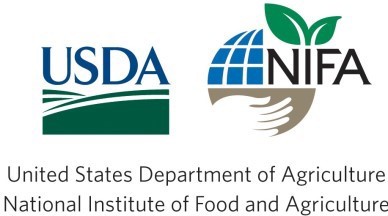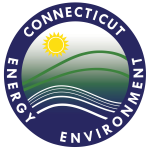By Victoria Wallace, John Inguagiato, and Alyssa Siegel-Miles, UConn Extension
INSECT PATHOGENIC NEMATODES |
Turf | Landscape |
| Heterorhabditis species (including H. bacteriophora (e.g., Nemasys) and H. megidis) or Steinernema glaseri (e.g., Nemagard): for control of white grubs. Nematodes move through moist soil, enter into the insect body cavity, and release mutualistic bacteria. The bacteria multiply, producing antibiotics that prevent other organisms from colonizing the dead insect. Moderate soil temperatures are required for bacterial growth (60º – 90ºF). | X | |
| Steinernema carpocapsae (e.g., NemAttack): for control of billbugs, cutworm, armyworm, sod webworm. Parasitic to insect pests that typically have a developing (larval or pupal) stage of life in the soil. May also parasitize above ground stages of adults, nymphs and larvae. | X | |
| BACTERIAL BIOINSECTICIDES | ||
| Bacillus thuringiensis (Bt): a naturally occurring soil bacterium that is fatal to the larva stage of certain insects. | ||
|
X | X |
|
X | |
|
X | |
| Chromobacterium subtsugae (e.g., Grandevo PTO): a naturally occurring bacterium used in a fermentation process that produces a product with insecticidal properties. A broad-spectrum bioinsecticide/miticide that reportedly controls or suppresses insect and mite pests on ornamentals and turf. | X | X |
| BIOFUNGICIDES | ||
| Bacillus licheniformis (Roots EcoGuard) is registered for use on turf (dollar spot and anthracnose) and ornamentals to manage fungal diseases. | X | X |
| Bacillus subtilis (e.g., Rhapsody, Companion) is labeled for control of several turfgrass fungal diseases (brown patch, dollar spot, gray leaf spot, powdery mildew, red thread, rust). |
X | X |
| Pseudomonas chlororaphis (Zio) is a new option for fungal disease control in turf (brown patch, Pythium blight, dollar spot, anthracnose) and ornamentals. |
X | X |
| Trichoderma asperellum and T. gamsii (Obtego) a mixture of two fungal species with activity against several soil-borne pathogens (Rhizoctonia, Pythium, Sclerotium, Armillaria). | X | X |
| FUNGAL BIOINSECTICIDES |
||
| Metarhizium anisopliae (e.g., Met52) - found naturally in soils; infects and kills insects. Targets ticks, thrips, weevils, mites and whiteflies. | X | |
| Beauveria bassiana strain GHA (e.g., BotaniGard ES, Mycotrol WPO) – for ornamentals and turf; targets chinch bugs, billbugs, whiteflies, aphids, thrips, psyllids, weevils and mealybugs. Toxic to bees; should not be used where pollinators are present. |
X | X |
| INSECT PREDATORS AND PARASITOIDS |
||
| Three species of parasitoid wasps* (Tetrastichus setifer, Diaparsis jucunda and Lemophagus errabundus) help control lily leaf beetles (Lilioceris lilii). |
X | |
| Lacewing (Chrysoperla rufilabris) larvae are active predators of soft-bodied insect pests: aphids, spider mites (especially red mites), thrips, whitefly, leafhoppers, eggs of pest moths, small caterpillars, soft scales, mealybugs, and some beetle larvae. Lacewing are available for purchase; however, they are naturally occurring and feed on nectar, pollen, and honeydew. They will independently populate landscapes that include yarrow, coreopsis, goldenrod, cosmos, sunflower, dill, and other native plants. | X | |
| Hoverflies* (Allograpta oblique) look like small bees or wasps. Hoverfly larvae prey on aphids, thrips, scale insects, and caterpillars; adult hoverflies are also important pollinators. They are attracted to many ornamental plants and will independently populate landscapes, including sweet alyssum, cosmos, marigold, sunflower, dill, fennel, cilantro, and yarrow. | X | |
| *INSECTS FOR INVASIVE PLANT CONTROL | ||
Beetles and weevils are used to control purple loosestrife (Lythrum salicaria)
|
X | |
| Rhinoncomimus latipes (weevils) are host-specific to mile-a-minute vine (Persicaria perfoliata). | X | |
| *Not available for purchase in the trade, but are either naturally occurring (hoverflies), or are being released by universities’ grant projects with the goal of increasing the natural distribution and spread of parasitoid populations. |
BIOLOGICAL PEST CONTROL PRODUCT VENDORS:
| COMPANY | PHONE/EMAIL | WEBSITE |
| ARBICO Organics | (800) 827-2847 | www.arbico-organics.com |
| Atlantic Golf & Turf | (413) 863-4444 | www.atlanticgolfandturf.com |
| BASF Corporation | (800) 526-1072 | www.basf.com |
| Beneficial Insectary | (800) 477-3715 | www.insectary.com |
| Biobee | www.biobee.com | |
| Biobest | info@biobestgroup.com | www.biobestgroup.com |
| Bioline AgroSciences | (805) 986-8265 | www.biolineagrosciences.com |
| Bioworks | (800) 877-9443 | www.bioworksinc.com |
| Green Earth Ag & Turf | (866) 374-5101 | www.greenearthagandturf.com |
| C. Hart Seed Company | (860) 529-2537 | www.hartseed.com |
| IPM Labs | (315) 497-2063 | www.ipmlabs.com |
| Koppert Biological USA | (810) 632-8750 | www.koppertus.com |
| SiteOne Landscape Supply | (800) SITE-ONE | www.siteone.com |
| Tom Irwin, Inc. | (800) 582-5959 | www.tomirwin.com |
Mention of trade names are not intended to constitute an endorsement of a trade product. Products must be registered with the state of CT to be used on school grounds. Always read and follow label instructions. The information in this document is for educational purposes only. The recommendations contained are based on the best available knowledge at the time of publication. The Cooperative Extension System does not guarantee or warrant the standard of any product referenced or imply approval of the product to the exclusion of others which also may be available. Funds to support the creation of this document were provided by the Connecticut Department of Energy and Environmental Protection. Any opinions, findings, conclusions, or recommendations expressed in this publication are those of the author(s) and do not necessarily reflect the view of the U.S. Department of Agriculture.
Questions? Contact:
Vickie Wallace
UConn Extension
Extension Educator
Sustainable Turf and Landscape
Phone: (860) 885-2826
Email: victoria.wallace@uconn.edu
Web: ipm.uconn.edu/school
UConn is an equal opportunity program provider and employer. © UConn Extension. All rights reserved.
Updated August 2019

